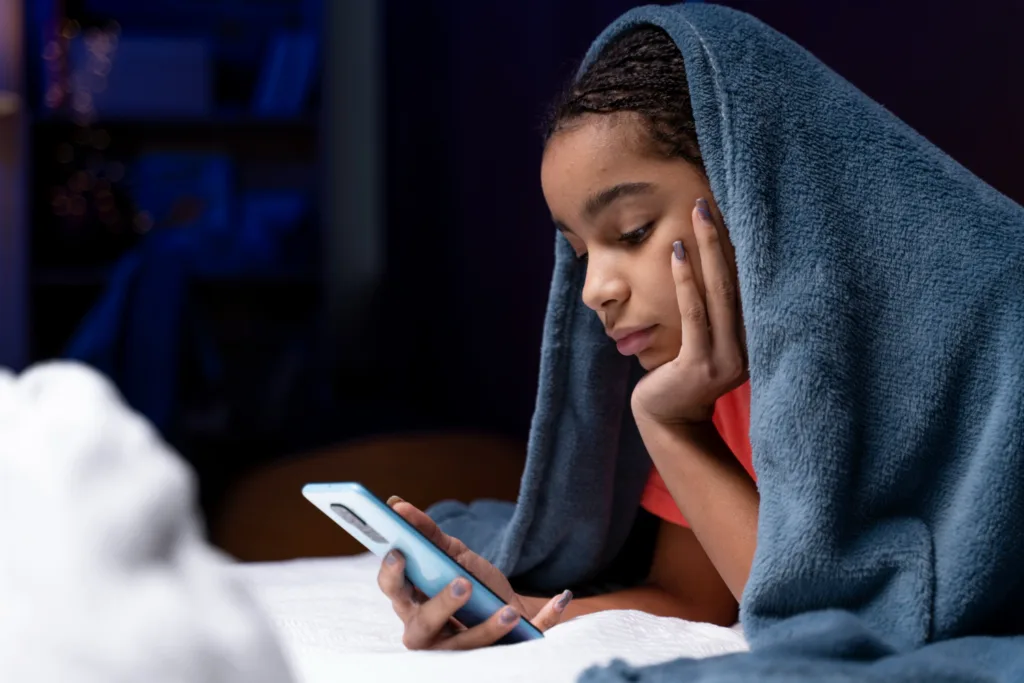When you purchase through links on our site, we may earn an affiliate commission. This doesn’t affect our editorial independence.
Staring at your phone while downloading an app to help you spend less time staring at your phone. Sounds like a lot, right? Yet here we are in 2025, fighting fire with fire – using technology to escape technology. This strange contradiction has become a legitimate strategy for many folks drowning in notification overload. This article will show you how to reduce screen time using tech.
Why We’re All Glued to Screens
Let’s face it – screens are everywhere. The typical Person grabs their phone around 100 times daily. Some studies show people dedicating over 7 hours to screens daily. That’s basically a full-time job of scrolling, tapping, and swiping.
This isn’t just annoying – it’s messing with our brains. Doctors have noticed patients showing withdrawal-like symptoms when separated from devices. Headaches, anxiety, insomnia, and even depression can follow excessive screen use. Plus, there’s the physical toll: sore necks, strained eyes, and terrible posture.
Most concerning? Kids growing up without learning how to make eye contact or hold conversations without a device between them.
Tech That Fights Back Against Tech
The old advice was simple: Just put down your phone! But cold-turkey approaches fail because they ignore how deeply tech is woven into daily life. The newer, paradoxical approach accepts an uncomfortable truth – sometimes you need technology to break free from technology.
Tracking Apps That will Help Reduce your Screen Time
Nothing hits harder than seeing your screen time report at week’s end. Seven hours DAILY on TikTok?! Apps like Screen Time (iOS) and Digital Wellbeing (Android) deliver these reality checks without mercy.
Lisa, a marketing director from Boston, described her reaction: “When I saw I spent 42 hours on social media in one week, I nearly threw up. That’s an entire work week scrolling through other people’s vacation photos.”
The tracking itself doesn’t solve anything. The gut punch of seeing those numbers visualized does.
Apps That Block Other Apps
Remember when parents would lock the TV cabinet? Today’s digital equivalent: focus apps that temporarily block distractions. These tools work because they add friction to mindless habits.
Freedom is an app that blocks websites across all your devices simultaneously. Forest grows virtual trees that die if you abandon your focus session. These guilt-inducing mechanics play mind games that actually work.
How to Reduce your Screen Time Using Smart Homes Tech
The newest front in the battle: your living space. Smart home setups can now enforce digital boundaries. Routers like Gryphon automatically disable social media during study hours. Smart lighting systems shift to energizing blue light during work and warmer tones as bedtime approaches, subtly telling your brain when to focus and when to wind down.
Some families program their mesh networks to disable YouTube during dinner hours – bringing conversation back to the table without nightly arguments.
Mindfulness Tech: The Ultimate Contradiction
Perhaps the weirdest example: meditation apps. Logging into your phone to escape your phone seems ridiculous. Yet apps like Calm and Headspace serve as training wheels, teaching skills that eventually help users need their phones less.
“The meditation app is like a nicotine patch,” explains Dr. Robert Keller, digital wellness researcher. “It’s still giving you a hit of technology, but in a way that gradually reduces dependency rather than feeding it.”
Reducing Your Screen Time With Tech Actually works
Then target your worst time-wasters. Social media between 10pm-midnight, set automatic blocks during those hours. Work concentration crashing after lunch, schedule focus sessions from 1-3pm daily.
Most importantly: expect failure and adjustment. No perfect system exists because technology constantly evolves. Monthly reviews help catch new problem areas before they become entrenched habits.
Final Thoughts On How To Reduce Your Screen Time Using Tech
This approach isn’t perfect. Critics rightfully point out the irony of becoming dependent on detox apps. The goal must be developing internal discipline that eventually needs fewer technological crutches.
But data shows tech-based approaches stick better than cold-turkey methods. One university study found app-assisted reduction techniques showed 27% better retention than willpower-only approaches.
The digital detox paradox ultimately works because it acknowledges reality: technology isn’t going anywhere. Learning to use it intentionally rather than mindlessly might be our best path forward in a world that’s increasingly difficult to unplug from.
